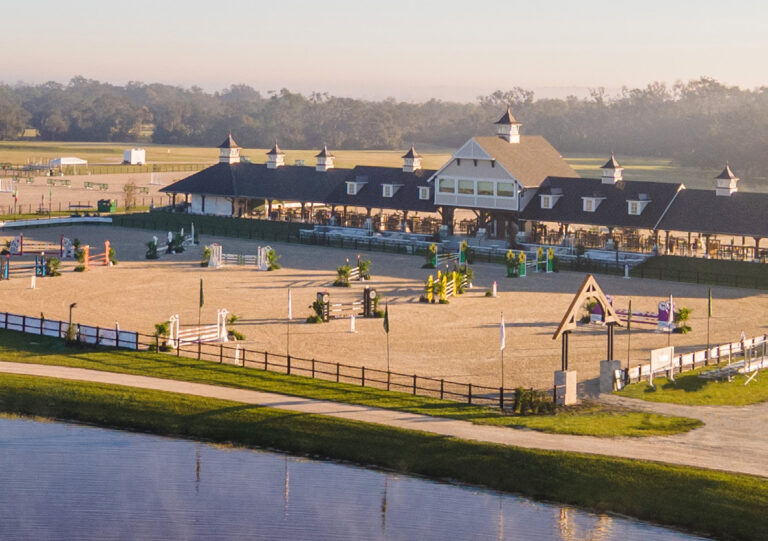Horse barn fire?it’s every horse owner’s worst nightmare, and it comes true too often. Fire happensin top-of-the-line new barns as well as creaky old ones. And once a horse barn fire starts, experts say, you have at best eight minutes to get horses out. After that, even if they escape, smoke inhalation may end their useful careers.
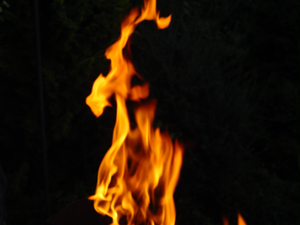
For all those reasons, prevention of horse barn fires is paramount. Yes, you need to make and practice an emergency plan in case a horse barn fire ever does happen. But even more, you need to scour your barn for fire risks, correct them, and keep them corrected.
To help you, we’ve consulted four experts, all experienced horsemen. Californian Tim Collins is a technical equine-rescue specialist with the Santa Barbara Humane Society and an adviser to Santa Barbara-based Equine Evac, which responds to fires, floods, and earthquakes. Ken Glatthar’s Lake Tahoe Security Services, Inc., based in Reno, Nevada, does fire investigations and is developing a special unit to work with large equine operations on preparedness. Besides his regular veterinary practice at North Carolina’s Southern Pines Equine Associates, Dr. Jim Hamilton serves on the Moore County Emergency Response Unit. And Lieutenant Chuck Younger of the nearby Southern Pines Fire and Rescue Department not only teaches horsemen about fire safety but teaches firefighters to work with horses. All four experts present emergency and fire-response talks and/or workshops to special-interest groups and the public.
Prevention
First, get rid of those fire hazards. Store hay away from the barn. All our experts stress this point?because hay that’s been baled damp can build up internal heat and ignite all by itself.
If you must store hay in your barn, at least be sure to . . .
Store hay carefully. “Store the minimum you can,” says Chuck, “maybe five to ten bales, preferably at ground level, away from electrical lights.” (His own brother lost a new barn after a hay supplier carelessly stacked bales up to the ceiling?where one made contact with a fluorescent light.) Leave a gap between bales, advises Tim, to let moisture dissipate. And install a smoke detector or heat detector above the hay.
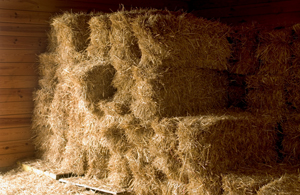
Check hay frequently. About a month after hay’s been delivered, Ken says, “break open a bale. If it’s very warm to your hand inside, it’s probably been put up too moist and is getting ready to combust. Check every bale; any that’s hot, move out of the barn.”
Make “No Smoking” the rule. Post signs outside and inside, and enforce them, with friends, family, and everyone else. “I’ve seen it too many times,” says Chuck. “The farrier comes to shoe your horses; he takes a break and lights up. You have to insist on no smoking?be?cause one stupid mistake and that’s it.”
Protect wiring. Rodents love to gnaw on the coating around wire, so encase all wiring in metal conduit; secure the conduit to the structure so horses can’t pull it out. “Give your horses play toys,” says Ken, “so they leave the wiring alone.” And regularly check that the conduit’s in good shape, especially at junctions or turns.
Protect lights. Cover every bulb with a metal or plastic cage so a rearing horse can’t hit and break it.
Break up bedding. When you muck, urges Tim, move the bedding around to break up the compaction caused by your horse’s normal walking in his stall. Fire won’t spread as fast through loose bedding.
Get flammables out of the barn. Check every jar and bottle and spray in your tack room, wash stall, grooming tote, and tack trunk. If the label says “flammable” (and it will on lots of things, from liniment to linseed oil), store that item away from the barn if you possibly can; at least store it in a fire-resistant container (a metal box, for instance). For the same reason, park your gas-powered mower and gas can elsewhere. And remove half-empty cans of paint; gas can build up in them and ignite.
Clear out clutter?the odds and ends that accumulate in feed- and tack-room corners can provide fodder for a spreading fire. Clear your barn aisle, too; if you must store tack trunks and electric fans and your grooming vacuum there, at least put them all on one side of the aisle, providing a wider passage for getting horses out.
Sweep clean. Regularly sweep the aisle clear of loose hay and stray bedding and manure that could land on something hot?such as the muffler of a truck you’ve backed in to unload?and start smoldering.
Knock down cobwebs?they’re highly flammable.
Bust dust. Get rid of the dust that builds up in space heaters, on heat lamps, and around your water heater. Use an air compressor or leaf blower (when no horses are in the barn to breathe in the dust), or take equipment down to the gas station to be blown clean, especially before you put it away for the summer. Clean smoke detectors, too?dust can trigger false alarms.
Use caution with extension cords. “We’d prefer not to see them,” says Chuck, “but with horses you have extension cords. Use the heavy-duty industrial-rated kind?and as soon as you finish, unplug the cord and put it away.” Don’t hang extension cords on nails, he adds; abrasion eventually breaks down the rubber coating.
Ken warns, “Don’t lay an extension-cord connection right in front of your hay pile, where hay can land on it and dust can get in between the plug and receptacle.” If current arcs between the cords, the resulting fire “can smolder for hours, then break out in the middle of the night.” He adds, “What we call ?electrical’ fires are not as prevalent as people think. Usually there’s another causal agent involved: something flammable in contact with the electricity.”
If you’re building a barn, all our experts agree, install enough outlets that you’ll never need an extension cord. The cost is relatively low; the safety return is high.
Handle heat with care. Your tractor, your truck, your clippers, your tack-room heater?anything with a motor or a heating element that warms up with use?needs to be kept away from hay, bedding, and flammables at all times, checked on carefully until it’s cooled, then put away safely.
Clear brush. Keep the ground around your barn clear of ornamental plantings and weeds; either could spread a fire. Trim back brush everywhere?including, says Tim, under low bushes; undergrowth can die back to become instant kindling. Clear fallen trees and branches.
Put your manure pile at a distance. Ma?nure is flammable; in hot, dry conditions, says Ken, it can spontaneously combust?and burn for a very long time.
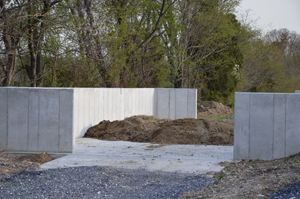
Think you’ve made your barn hazard-free? Good. Now, says Tim, ask somebody unfamiliar with the place to walk through and help you spot the safety risks you’re too used to seeing. Even better, says Chuck Younger, have a member of your fire department do the walk with you.
Protect
A number of safety features can improve your odds of stopping a small barn fire or saving your horses from a big one. Some, listed below, are simple add-ons. Others require some structural work; you’ll find them under “Build for Safety” on the previous page.
Clearly mark your entrance?with your address, not just your farm name. With 911 emergency service, the fire de?part?ment will be looking for “234 Ce?dar Lane,” not “Cedarwood Farm.” (Barn not clearly visible from the en?trance? Add a di?rectional sign along your driveway.)
Make your en?trance accessible. Chuck recommends, “Make your driveway at least 12 feet wide with at least 12 feet clearance overhead. Trim back all limbs. And make sure the road is in driv?able condition (a graveled driveway is great). Our big fire trucks do you no good if they can’t get up the drive.” Any gates also need to be at least 12 feet wide; check monthly that they don’t sag and do swing all the way open.
Have adequate water available. Most horse barns are miles from the nearest fire hydrant, and few farms’ wells can meet the needs of firefighting. The alternatives: a water-storage tank in your barn or a pond or lake or river nearby. Make sure a pumper truck can get to the pond without bogging down; for fill dynamics, the water surface must be no more than 20 feet below the parked truck.
What’s adequate capacity? Chuck’s rule of thumb: “For every bale of hay stored in your barn, you need 50 gallons of water. If somebody’s got 100 bales of hay, we’ll need 5,000 gallons of water available just for that hay.”
Even if you don’t store hay in your barn, your fire department’s pumper truck may not carry enough water to put out a fire, Chuck warns. Be sure you can supplement what the pumper provides.
Hang a halter and lead, snapped together, on every stall door?where they’re immediately available if you need to get horses out fast. Have blindfolding material available, too (see “Plan and Prac?tice” below), but not hanging on a stall door where it’ll gather dust. Tim also suggests having a long-sleeved shirt handy for yourself. “Horses who see a body coming at them out of the smoke are likely to bite out of fear; with your arms covered, they may bite the shirt but miss you.”
Consider switching stalls. Horses have a powerful instinct to head for home if frightened?even if home is in flames. To dampen this instinct, Chuck rotates his own horses from stall to stall periodically.
Identify and mark all exits.
Install fire extinguishers. Chuck recommends ABC (chemical) extinguishers in the tack room and by the barn’s electrical panel; get the metal-headed ones that can be recharged, and recharge on schedule. For bedding fires, though, you’ll need water; a chemical extinguisher will snuff out flames but the bedding will continue to smolder until it’s soaked with a hose or a water extinguisher. Of course, he adds, “Don’t use water on an electrical fire?use your chemical extinguisher here.”
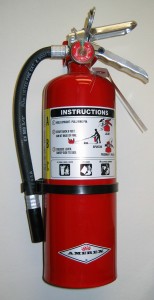
Make sure hoses reach. With either a spigot at either end of the barn or a single spigot, make sure the garden hose you hang nearby is long enough to reach every part of your barn. Safety note: If you ever do find and put out a fire in your barn on your own, be sure to check all bedding throughout the barn carefully, making sure that no stray sparks are smoldering undetected.
Install smoke detectors?battery-powered ones that’ll function in a power outage. Replace batteries once a year, and keep detectors clean.
Keep a flashlight near any entry door, and check its batteries regularly.
Post emergency information beside your barn phone and house phone, and make sure everyone in your barn knows where the phones are and where the information is. Include the emergency number to call (911 if your area has that service, or your fire department or emergency-dispatch service?see next point), the barn address, and simple directions from a well-known nearby landmark. (First write down what you think the directions are; then do a dry run with a friend driving, following your instructions exactly. As you go, correct mistakes and fill in gaps in information. Then post your “road-tested” directions.)
Link up with your emergency-dispatch center?your fire department can tell you how. Ken suggests having your local horsemen’s organization do this as a group: Make the contact, find out what information the dispatchers want, and then supply it for every barn, including clear directions (checked as noted above). The dispatch center can enter the information on its computer or in its files, where it will be available to fire and other emergency personnel.
Designate an emergency paddock?someplace that’s not downwind of your barn, so you minimize rescued horses’ risk of smoke inhalation. Make sure its gate swings freely and you can open the latch one-handed. Install a spring-loaded closer for the gate, Ken and Jim both recommend, so it’ll swing firmly shut on its own, freeing you to go back for the next horse.
Write out your emergency plan (see “Plan and Practice” below) and practice it?with your horses and with everyone who frequents your barn.
Duplicate information. Don’t keep originals of any important records in the barn. If you want the records available, make copies for the barn and keep the originals in your house. Better yet, keep the originals in your safe-deposit box. Make a list of all the medications and supplements your horses need; update the list regularly and keep a copy in your glove compartment. Your veterinarian can use it to help you assemble emergency supplies if yours go up in flames.
Inspect the barn every night. Make it the last thing you do after you’ve checked your horses: Go down the aisle, into the tack room and wash stall, and anyplace else anybody might have been, especially with clippers or a coffeepot or a hot plate or a bucket warmer. Make sure everything’s unplugged, everything’s cool, and all the cords are coiled up safely, out of the way.
Make it Manageable
Got a lot on your fire-safety “to do” list? Tim has a suggestion. “Write down everything you need to do. Prioritize what needs doing soonest. Then take your calendar or day planner and divide up the tasks: ?This month I’m going to check and refill the fire extinguishers, then check the wiring and encase it in conduit. Next month I’m going to get everybody together and clean the clutter out of the tack room and the wash room and the aisles. ?’ When each new task comes up on your calendar, it’ll refresh your memory of your whole safety plan.”
On the next page, take our test to find out YOUR barn”s fire rating.
This article originally appeared in the November 1999 issue of Practical Horseman magazine.





